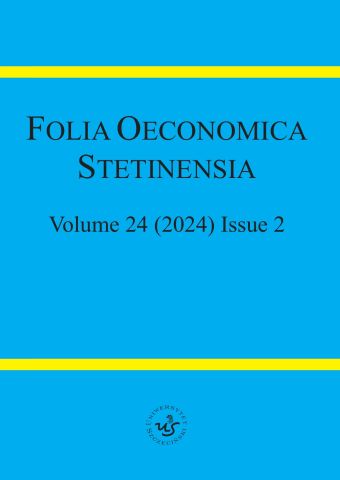Poverty and Social Exclusion in European Countries
Poverty and Social Exclusion in European Countries
Author(s): Iwona Bąk, Emilia Barej-KaczmarekSubject(s): Economy, National Economy, Public Finances, Socio-Economic Research
Published by: Wydawnictwo Naukowe Uniwersytetu Szczecińskiego
Keywords: poverty; social exclusion; EU countries; taxonomic measure of development; Weber median
Summary/Abstract: Research background: Social exclusion and poverty constitute pressing issues in contemporary societies and significant obstacles to achieving sustainable social development. In contemporary Europe, they are recognised as one of the most severe social problems. Consequently, the pursuit of research in this domain appears entirely justified. Purpose: This paper aims to examine the disparities in levels of poverty and social exclusion among European Union countries, employing an analysis of the indicators delineated in Agenda 2030. Research methodology: The linear ordering and determination of the typological groups of objects was conducted using a method based on the median Weber vector. To ascertain potential changes in the phenomenon under investigation, the survey was conducted in two years: 2015 and 2022. Results: The linear ordering of objects, as presented in the paper, revealed that Romania, Bulgaria and Latvia consistently exhibited the highest levels of poverty and social exclusion, regardless of the year studied. In 2015, Greece was also included in this Group. Conversely, nations situated in the northern regions of Europe, including Scandinavian countries, consistently demonstrated the lowest levels of the studied phenomenon. The empirical research results thus underscore substantial disparities between developed and developing countries. Novelty: The paper makes a valuable contribution to the current European and global academic discourse on poverty and social exclusion, both recognised as formidable social challenges worldwide.Research background: Social exclusion and poverty constitute pressing issues in contemporary societies and significant obstacles to achieving sustainable social development. In contemporary Europe, they are recognised as one of the most severe social problems. Consequently, the pursuit of research in this domain appears entirely justified. Purpose: This paper aims to examine the disparities in levels of poverty and social exclusion among European Union countries, employing an analysis of the indicators delineated in Agenda 2030. Research methodology: The linear ordering and determination of the typological groups of objects was conducted using a method based on the median Weber vector. To ascertain potential changes in the phenomenon under investigation, the survey was conducted in two years: 2015 and 2022. Results: The linear ordering of objects, as presented in the paper, revealed that Romania, Bulgaria and Latvia consistently exhibited the highest levels of poverty and social exclusion, regardless of the year studied. In 2015, Greece was also included in this Group. Conversely, nations situated in the northern regions of Europe, including Scandinavian countries, consistently demonstrated the lowest levels of the studied phenomenon. The empirical research results thus underscore substantial disparities between developed and developing countries. Novelty: The paper makes a valuable contribution to the current European and global academic discourse on poverty and social exclusion, both recognised as formidable social challenges worldwide.
Journal: Folia Oeconomica Stetinensia
- Issue Year: 24/2024
- Issue No: 2
- Page Range: 3-19
- Page Count: 17
- Language: English

